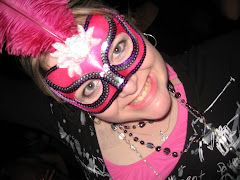Hi Everyone, just posting another draft. Any comments/feedback would be great as I don't know if I have covered everything appropriately. Thanks
The interrelatedness of prejudice, stereotyping and aggression
Introduction
Prejudice, stereotyping, discrimination and intergroup aggression have traditionally been thought of as socially relevant and highly important components for research (Harrington, 2003/04). Prejudice, stereotyping and aggression are interrelated concepts which have influenced each other within history and continue within today’s society. These concepts are evident within society and have been documented in film, Ghosts of Rwanda, following the Rwandan Genocide; and Australian Eye, a documentary of Jane Elliot's work. It appears as though prejudice, stereotyping and aggression are involved in a circular relationship, each influencing each other and repeating the cycle.
Social Categorisation and Stereotyping
Social categorisation is the process of sorting people into different groups based on common characteristics which can include: race, religion, sexuality, gender and age (Baumeister & Bushman, 2008). This concept refers to an us versus them, or alternatively the in-group versus the out-group mentality (Baumeister & Bushman, 2008). These types of categorisation can be seen in both Ghosts of Rwanda and Australian Eye. Within Ghosts of Rwanda, the in-group were the Hutu’s and the out-group were the Tutsi’s. Moreover, within Jane Eliott’s experiment, the brown eyed people were the in-group versus the blue eyed people in the out-group. These themes are presented within the concept map provided and showed the direct link between stereotyping and social categorisation. This is one of the key components of the overall conceptualisation of the interrelated terms of prejudice, stereotyping and aggression.
Social categorisation can lead to many different outcomes, including out-group homogeneity bias, the belief that all people within a group are alike; and in-group favouritism, favourable attitudes and preferential treatment toward someone in one’s own group (Baumeister & Bushman, 2008). These concepts have been included within concept map, linked to social categorisation and originally stereotyping. Additionally, even if group membership is randomly assigned, people have the tendency to show favouritism to in-group members, which is known as minimal group effect (Baumeister & Bushman, 2008). The human mind somewhat innately classifies people and objects into groups as opposed to thinking about their separate counterparts (Baumeister & Bushman, 2008). Classifying people into groups acts as a mental shortcut and consequently people believe individual behaviour can be predicted based on the group associated with the individual (Baumeister & Bushman, 2008). Perceptions, attitudes and beliefs influence intergroup behaviour and the ultimate actions (Bar-Tal, Graumann, Kruglanski & Stroebe, 1989). This concept of attitudes, beliefs and consequent actions integrates the factors underlying prejudice, stereotyping and aggression, and illustrates the influence each factor holds.
Stereotyping and Prejudice
Studying the interrelated concepts of stereotyping and prejudice involves analysing group membership, intergroup relationships and human nature (Bar-Tal et al., 1989). Understanding the interrelatedness of these concepts can assist awareness and possibly help to decrease problems which face many people everyday (Harrington, 2003/04). The concept of prejudice and stereotyping parallels attitudes and opinions or beliefs (Stroebe & Insko, 1989). A negative intergroup attitude usually makes up the components of prejudice; where as opinions or beliefs about a particular social group and their attributes is classified as stereotyping (Stroebe & Insko, 1989). However, as noted in the concept map, attitudes can either be positive or negative. Stroebe and Insko (1989) posit that the relationship between stereotyping and prejudice is linked to attitudes toward attributes and the consequent evaluation of either positive or negative attributes. In addition, stereotyping and prejudice are closely related concepts but they hold alternative views surrounding the direction of causality (Stroebe & Insko, 1989). Social problems become evident when stereotypes and prejudice result in hostile aggressive behaviour and discrimination toward outgroup members (Stroebe & Insko, 1989). This statement illustrates the relationship between the three components and can be seen as linking factors within the concept map.
In relation to prejudice, both psychodynamic and cognitive approaches aim to explain the interrelated and intrapersonal concepts surrounding out-group devaluation, treatment and rejection (Stroebe & Inkso, 1989). Within the psychodynamic theories, prejudice is believed to be the result of intrapersonal conflict, not social learning processes or societal conflicts (Stroebe & Inkso, 1989). The authoritarian personality, provides explanations for the development of prejudice, and states three assumptions (Stroebe & Inkso, 1989). Firstly, prejudice is correlated with alternative economic, political and social beliefs and is therefore part of a broader ideological framework; secondly, this relatedness is due to more basic personality characteristics; and lastly, personality basis of prejudice is mainly the result of parental influence (Stroebe & Inkso, 1989). The term authoritarian personality has been integrated into the overall conceptualisation, which can be seen within the concept map. Research by Stanley Milgram helped to form the basis of this theory, from his work with obedience and authority figures (Harrington, 2003/04), and consequently this is another aspect within this relationship conceptualisation.
Prejudice and Aggression
Aggression has three key points: aggression is an observable behaviour; aggression is intended to harm, it is not accidental; and victims of aggression want to avoid injury (Baumeister & Bushman, 2008). In relation to theory, the scapegoat theory assumes that displaced aggression is commonly placed onto members of minority groups, by blaming the frustration or characterising negative attributes to the minority group, however it cannot explain its targets (Stroebe & Inkso, 1989). Even though the scapegoat theory and the authoritarian personality theory cannot explain differences in levels of prejudice or why certain groups become targets (Stroebe & Inkso, 1989). Even so, both these concepts have been utilised within the concept map and can be seen to be linked with the out-group which is linked to prejudice behaviour of discrimination and social categorisation and stereotyping.
According to Harrington (2003/04) at least three approaches have been used by social psychologists to examine prejudice and intergroup hostility, a form of aggression. Firstly, the social influence perspective illustrated by Stanley Milgram’s experiments, which investigated how the presence of other people can influence an individual’s thinking and behaviour (Harrington, 2003/04). This approach has been useful in noting the behaviours of both individuals and groups when advised by authority figures (Harrington, 2003/04). Additionally, within this perspective, the concept of social learning theory applies through Albert Bandura work into the components of modelling and aggression (Harrington, 2003/04). Secondly, Harrington (2003/04) notes the socio-political attitudes perspective, most widely known from Theodor Adorno and others research, published within The Authoritarian Personality. This area has been of interest in relation to interpersonal aggression and intergroup hostility (Harrington, 2003/04). The third perspective is social-cognition which can be related to aggression and stereotyping. Consequently, these terms have also been integrated into the concept map and contribute to the overall conceptualisation.
Aggression and Stereotyping
Stereotypes are explained by the social cognition perspective, is the third perspective stated by Harrington (2003/04), this developed from observations that the human mind is imperfect, and consequently utilises mental shortcuts in order to categorise objects within the social world (Harrington, 2003/04). Both social categorisation and social learning developed from the social cognition perspective, from the observation that placing individuals in random groups was adequate to influence in-group preference (Harrington, 2003/04). This fits into theories surrounding cognitive heuristics related primarily to stereotyping, prejudice and the consequent behaviour which can be aggressive. This is another aspect involved within the conceptualised model.
Prejudice, Stereotyping and Aggression
According to Harrington (2003/04) the study of prejudice, stereotyping and aggression, involves three main fields help to explain their origins. Socio-political areas including authoritarian and social dominance theories aim to explore individual differences and consequent implications for prejudice (Harrington, 2003/04). Additionally, social cognition research aids in stereotype formation understanding; theories including diffusion of responsibility, de-individuation and conformity help explain aggressive behaviour in groups (Harrington, 2003/04). Social identity theory examines intergroup hostility and insight into social categorisation and group formation (Harrington, 2003/04). Not all of these terms have been discussed in great detail however the basis of theory for prejudice, stereotyping and aggression are somewhat similar in information available.
Prejudice, Stereotyping and Aggression Research
In regard to classic theories and research, this field of thought involved some of the well know experiments still discussed today. These include: Sherif’s construction of social norms; Asch’s conformity; Milgram’s obedience to authority; Zimbardo, Haney, Banks and Jaffe power of social roles; and Latané and Darley bystander intervention (Harrington, 2003/04). With some of these classic experiments developed as particular explanations for intergroup conflict or aggression (Harrington, 2003/04). The work of Milgram, Bandura and Zimbardo have been integrated into the conceptualisation of the interrelated concept of prejudice, stereotyping and aggression as these theorists provided insight into the inner workings of each component. Their work has been added to the model as their research has provided useful information into the basis of these terms.
Conclusion
Stereotyping consists of opinions and beliefs about a certain social group, where as prejudice involves holding negative intergroup attitudes and from these beliefs aggression can develop. This illustrates the continual influence of prejudice, stereotyping and aggression in everyday situations. These concepts will continue to influence both society and individual members of a social group. Understanding the interrelatedness of these concepts can assist awareness and aim to influence positive change for all people.
References
Bar-Tal, D., Graumann, C. F., Kruglanski, A. W., & Stroebe, W. (1989). Preface.
In D. Bar-Tal, C. F. Graumann, A. W. Kruglanski, & W. Strobe (Eds.), Stereotyping and prejudice: changing conceptions (pp. v – vi). New York: Springer-Verlag.
Baumeister, R. F. & Bushman, B. J. (2008). Social psychology and human
nature. Belmont, CA: Thomson Wadsworth.
Bethlehem, D. W. (1985). A social psychology of prejudice. UK: Croom Helm.
Harrington, E. R. (2003/04). The social psychology of hatred. Journal of Hate
Studies, 3(1), 49-82.
Stroebe, W., & Inkso, C. A. (1989). Stereotype, prejudice, and discrimination. In
D. Bar-Tal, C. F. Graumann, A. W. Kruglanski, & W. Strobe (Eds.), Stereotyping and prejudice: changing conceptions (pp. 3 – 34). New York: Springer-Verlag.
Appendices (add links)
Appendix A: Self-assessment
Appendix B: Other
Appendix C: Glossary of Terms
Appendix D: Key Theorists





1 comment:
An APA style tip:
If a reference is cited more than once in a para, the subsequent citations do not include the year.
e.g.,
"race, religion, sexuality, gender and age (Baumeister & Bushman, 2008). This concept refers to an us versus them, or alternatively the in-group versus the out-group mentality (Baumeister & Bushman)."
Post a Comment